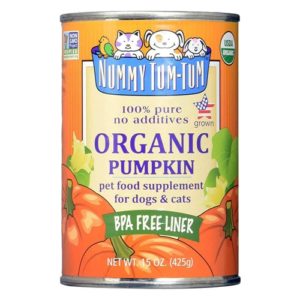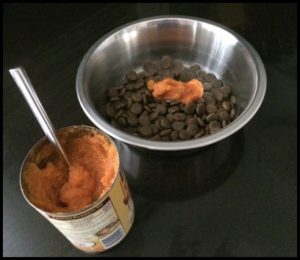|
Your beautiful sweet little puppy looks so adorable, but as they continue to grow, some dogs may develop tear stains, especially if your puppy is of lighter color. Tear stains can accumulate as excess moisture (referred to as epiphora) develops from tears causing bacteria and yeast to grow. This condition is most prevalent in certain breeds including Shitzu, Lhasa Apso and Maltese. The causes of excessive tearing include, but not limited to genetics, health, diet, bacterial infection, ear infections, teething, irritation, high mineral content in the dog’s drinking water, blocked tear ducts, poor diet, plastic bowls, etc. Why Do Some Pets Have or Show More Tear Staining? Tear stains are typically the result of porphyrins. Porphyrins are naturally occurring molecules containing iron – waste products from the breakdown of red blood cells -- and are mostly removed from the body through bile and the intestinal tract, however, in some dogs porphyrin is excreted through tears, saliva, and urine. When tears and saliva containing porphyrins sit on light-colored fur for any period of time, staining will occur. And if it seems your pet’s tear stains are worse after he’s been outside, you’re not imagining things. The iron-containing stains do indeed darken when exposed to sunlight. How to Treat Tear Stains Safely You can do a lot to control your pet’s tear staining by keeping his face meticulously clean and free of porphyrin-containing moisture. This means gently wiping his face at least twice a day with a soft, warm, damp cloth, keeping his face hair trimmed, and if necessary, making regular appointments with a groomer. Other suggestions:
Health Insurance is an individual decision and there is no magic formula that will tell you if it's right for you and your pet. If you are considering pet insurance, talk to your veterinarian about different options to see if pet insurance is something you may consider. Here are some considerations:
Below is a list we have complied that provide pet insurance. The list is intended to provide information and links to help you investigate and make an informed decision if insurance is right for your pet. As always, discuss with your veterinarian for further questions about pet insurance. AKC Pet Insurance ASPCA Pet Health Insurance Best Friends Pet Insurance Embrace Pet Insurance Figo Pet Insurance Healthy Paws PetFirst Healthcare Pets Best Petplan PurinaCare Trupanion VPI 10 Best Pet Insurance Companies of February 2022 | Money It is important to remember your small puppy is not fully immunized until 16 weeks of age and they are still producing antibodies against germs until this time. We bring this up because there is a parasite that you should be aware of named Coccidiosis (Coccidia). Around 90% of all puppies and dogs alike carry this natural bacteria – Coccidia – in their intestines. Most dogs will never have any situation with this parasite, and others will (especially young puppies). This occurrence is more common in puppies due to compromising their young developing immune system. As stated, your puppy is still developing their immune system and if their system becomes stressed, the Coccidia parasite may no longer stay dormant and actually hatch within the puppies’ intestines. This can occur most often due to stress from transitioning a puppy to a new environment, being taken away from mom and siblings, car rides, over stimulation, rough play etc. Symptoms include:
If any of these signs due occur, a visit to your vet is in order. Diagnosing and treating Coccidiosis – the vet will need a fecal sample. Typically, Coccidia is treated with sulfonamides which is an antibiotics. The most common sulfonamides used is Albon and Bactrovet. Your vet can discuss the best option for your puppy. ITEMS TO AVOID REASONS TO AVOID
Alcoholic Beverage Can cause intoxication, coma and death Acocado Can cause vomiting and diarrhea Bones from Poulty Can cause obstruction or laceration in digestive tract Cat Food Too high of protein count and fats Chocolate or Coffee Contains caffeine and be toxic to heart Citrus Oil Extracts Can cause vomiting Fat Trimmings Can cause pancreatitis Fish (raw or canned) Can cause seizures, vitamin B deficiency if feed too much Grapes or Raisins Unknown toxins which can damage kidneys Human Vitamins Can damage the lining of digestive tract and be toxic to other organs Macadamia Nuts Unknown toxins, damaging to organs Milk and Dairy Diarrhea and mucus forming Mushroom Unknown toxins, shock to body Onions or Garlic Contains sulfoxides and disulfides which can damage red blood cells Raw Eggs Contains an enzyme called avidin. Toxic and contains Salmonella Sugary Foods Can lead to obesity, dental problems and diabetes mellitus Artificial Sweeteners Can cause low blood sugar (hypoglycemia), vomiting, liver failure When people think of pumpkin, they may think of carving a pumpkin for Halloween, baking a delicious pie or splurging on a pumpkin latte from Starbuck during holiday time. But many people may not know the great health benefits pumpkin offers for their furry friend. 100% pumpkin (canned is fine) is high in fiber, low in fat and cholesterol, and loaded with beta carotene, magnesium, potassium, iron, zinc and vitamins A and C.
A Tablespoon a day is all that is needed for your dog to reap the amazing benefits of pumpkin. THE MANY BENEFITS OF PUMPKIN
Giardia is a protozoan parasite that can infect the gastrointestinal tract of puppies and dogs and is capable of causing diarrhea and vomiting, weight loss and lethargy — although many infected animals show no signs at all. It is common throughout the United States and can cause infections at almost any time of year. Unlike many other infectious organisms, Giardia persists longer in the environment when conditions are cool and moist.
Most dogs become infected by drinking water contaminated with feces. Giardia then infects the small intestine, and infected dogs pass microscopic cysts in their stool. These cysts can then infect another animal or person if ingested. Giardia cysts are very resistant in the environment, and can live for many months under the correct circumstances. These cysts are a threat to pet health, and giardia is a very common cause of pet diarrhea in the United States.
Testing for Giardia. There is no perfect test for giardia. Giardia is an elusive parasite, and cysts are shed only intermittently from the gastrointestinal tract of an infected dog. A single fecal sample has only a 70 percent chance of detecting an infection. Performing three fecal samples within five consecutive days increases the chance of detection to greater than 90 percent. There are other tests such as the giardia ELISA that can be used with a routine fecal sample to increase the likelihood of a diagnosis to about 95 percent. Treating Giardia. If your dog is diagnosed with giardia, he will likely be prescribed medication, and your veterinarian will recommend a follow-up fecal sample two weeks after treatment. A dog should be bathed on his last day of treatment to eliminate all giardia cysts from his hair coat. Wearing gloves, you should bathe and rinse his whole body as normal and then focus last on his hind end. Do not touch the rest of his body after you have bathed and rinsed around the anus. This will eliminate spreading any remaining giardia cysts around his hair coat. Pet bowls, toys, etc., should be disinfected in either boiling water or in a high-temperature dishwasher. Upholstery and carpeting should be steam-cleaned and allowed to dry. Hard surfaces can be disinfected with a dilute bleach solution (3/4 cup of bleach mixed with 1 gallon of water) or a disinfecting household cleaning product. |
|






